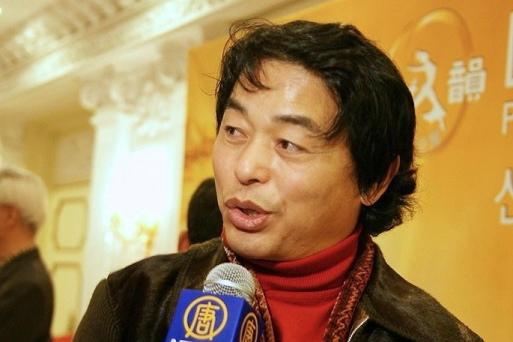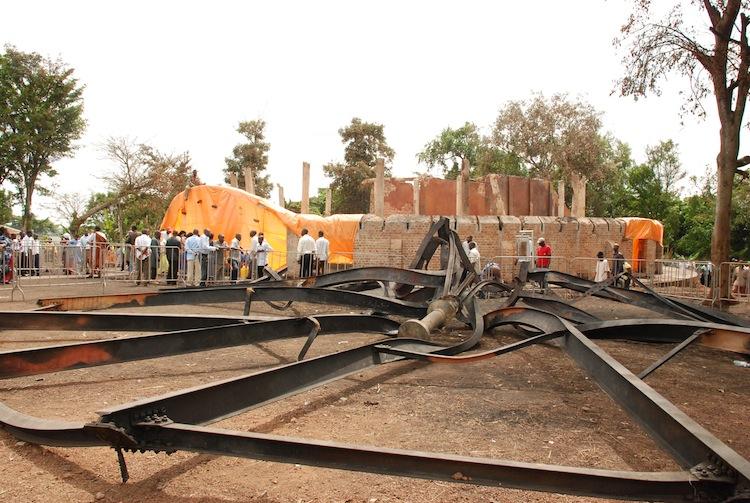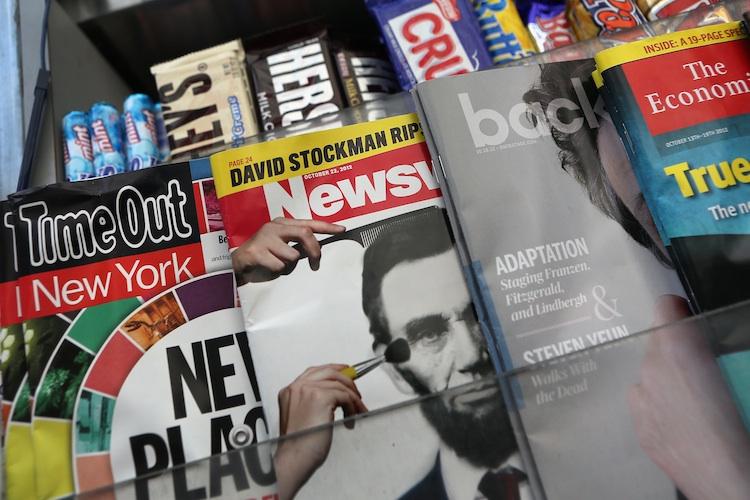NEW YORK—As the summer heat drains our bodies dry, Mayor Michael Bloomberg and Environmental Protection Commissioner Cas Holloway launched a new program Sunday to make drinking water more accessible in public spaces across New York City.
The new fountains, located at public plazas, city parks, markets, and special events across the five boroughs, include six faucets for direct drinking or filling water bottles, as well as separate bowls for pets.
“We’ve made unprecedented investments in maintaining and improving the system that delivers world-renowned drinking water every day to 8.4 million New Yorkers,” said Bloomberg in a news release. “Our water is the healthiest, most affordable and most environmentally friendly way to stay hydrated. The Water-on-the-Go program will make it easier for New Yorkers—and their pets—to enjoy New York City water at many of the great public spaces and events the city has to offer this summer.”
The fountains are being rotated around the city according to a summer schedule. Some locations include Tuesdays at the Brooklyn Borough Hall Greenmarket, Wednesdays at the Times Square Public Plaza, Thursdays at the West 175th Street and Broadway Greenmarket, Fridays at the Union Square Greenmarket, Saturdays at rotating events, such as the Weekend Walks in Staten Island, Sunnyside, and the Bronx, and Sundays at rotating locations, which include the Brooklyn Bridge Park.
The Department of Environmental Protection has 10 portable Water-on-the-Go fountains that can be easily hooked up to and removed from fire hydrants around the city. The department’s staff will deliver, set up, and disconnect the fountains at the start and end of each day.
“New York City water is clean and tastes great because 7,000 miles of water mains, aqueducts, and tunnels are fed by water that comes from pristine upstate watersheds that the city rigorously protects and maintains,” Holloway said. “Our water is the perfect summer beverage because it has no calories, it keeps you cool, and at approximately one penny per gallon, it is 1,000 times cheaper than bottled water.”
The program is designed to make drinking water more readily available at highly populated locations throughout the city, while reducing the need for bottled water and soft drink purchases.
“Water is the best way to stay hydrated, especially during the hot summer months,” said Department of Health and Mental Hygiene Commissioner Dr. Thomas Farley. “New York City tap water is a refreshing, affordable alternative to soda and other sugary beverages, and Water-on-the-Go fountains will make it even more accessible.”
“Parks is pleased to partner with the Department of Environmental Protection to reduce the City’s carbon footprint and keep the city cleaner,” said Commissioner Benepe. “This summer, you can stay cool by filling up your water bottle at many great events events and locations across the city. And using Water-on-the-Go means one less water bottle going into a landfill.”
The program Water-on-the-Go program will run until Labor Day weekend. A listing of the Water-on-the-Go locations is available at www.nyc.gov.
OPTIONAL IF NEEDED:
The Bloomberg Administration has made a larger commitment to maintaining and improving the City’s water system than any administration in City history. More than $21 billion has been committed to water system capital projects, including:
• $2.5 billion for the City’s Third Water Tunnel – more funding for the tunnel than the previous five Administrations combined;
• Acquisition of nearly 70,000 acres of land upstate to protect the City’s watershed – New York City is one of only five large cities in the country to obtain the majority of its water from unfiltered sources; and
• $5 billion for upgrading the City’s 14 wastewater treatment plants and a nearly $1 billion commitment to reduce combined sewer overflows, which has helped bring harbor water quality to an all-time high since testing began 100 years ago and allowed wastewater treatment plants to meet the Federal Clean Water Act’s secondary treatment standards for the first time ever.
The new fountains, located at public plazas, city parks, markets, and special events across the five boroughs, include six faucets for direct drinking or filling water bottles, as well as separate bowls for pets.
“We’ve made unprecedented investments in maintaining and improving the system that delivers world-renowned drinking water every day to 8.4 million New Yorkers,” said Bloomberg in a news release. “Our water is the healthiest, most affordable and most environmentally friendly way to stay hydrated. The Water-on-the-Go program will make it easier for New Yorkers—and their pets—to enjoy New York City water at many of the great public spaces and events the city has to offer this summer.”
The fountains are being rotated around the city according to a summer schedule. Some locations include Tuesdays at the Brooklyn Borough Hall Greenmarket, Wednesdays at the Times Square Public Plaza, Thursdays at the West 175th Street and Broadway Greenmarket, Fridays at the Union Square Greenmarket, Saturdays at rotating events, such as the Weekend Walks in Staten Island, Sunnyside, and the Bronx, and Sundays at rotating locations, which include the Brooklyn Bridge Park.
The Department of Environmental Protection has 10 portable Water-on-the-Go fountains that can be easily hooked up to and removed from fire hydrants around the city. The department’s staff will deliver, set up, and disconnect the fountains at the start and end of each day.
“New York City water is clean and tastes great because 7,000 miles of water mains, aqueducts, and tunnels are fed by water that comes from pristine upstate watersheds that the city rigorously protects and maintains,” Holloway said. “Our water is the perfect summer beverage because it has no calories, it keeps you cool, and at approximately one penny per gallon, it is 1,000 times cheaper than bottled water.”
The program is designed to make drinking water more readily available at highly populated locations throughout the city, while reducing the need for bottled water and soft drink purchases.
“Water is the best way to stay hydrated, especially during the hot summer months,” said Department of Health and Mental Hygiene Commissioner Dr. Thomas Farley. “New York City tap water is a refreshing, affordable alternative to soda and other sugary beverages, and Water-on-the-Go fountains will make it even more accessible.”
“Parks is pleased to partner with the Department of Environmental Protection to reduce the City’s carbon footprint and keep the city cleaner,” said Commissioner Benepe. “This summer, you can stay cool by filling up your water bottle at many great events events and locations across the city. And using Water-on-the-Go means one less water bottle going into a landfill.”
The program Water-on-the-Go program will run until Labor Day weekend. A listing of the Water-on-the-Go locations is available at www.nyc.gov.
OPTIONAL IF NEEDED:
The Bloomberg Administration has made a larger commitment to maintaining and improving the City’s water system than any administration in City history. More than $21 billion has been committed to water system capital projects, including:
• $2.5 billion for the City’s Third Water Tunnel – more funding for the tunnel than the previous five Administrations combined;
• Acquisition of nearly 70,000 acres of land upstate to protect the City’s watershed – New York City is one of only five large cities in the country to obtain the majority of its water from unfiltered sources; and
• $5 billion for upgrading the City’s 14 wastewater treatment plants and a nearly $1 billion commitment to reduce combined sewer overflows, which has helped bring harbor water quality to an all-time high since testing began 100 years ago and allowed wastewater treatment plants to meet the Federal Clean Water Act’s secondary treatment standards for the first time ever.



